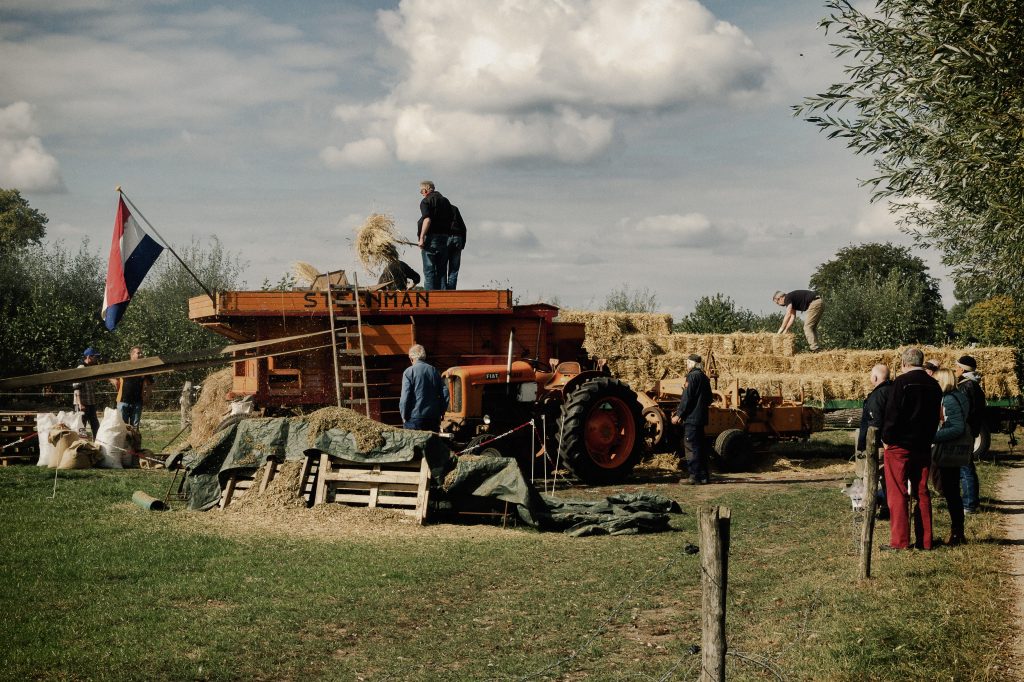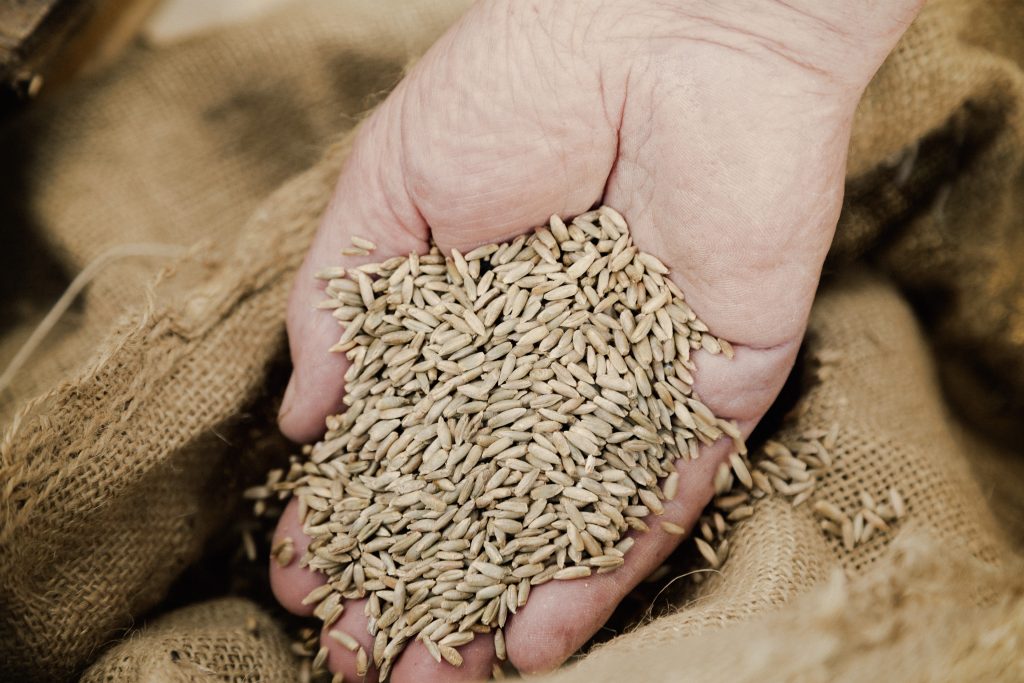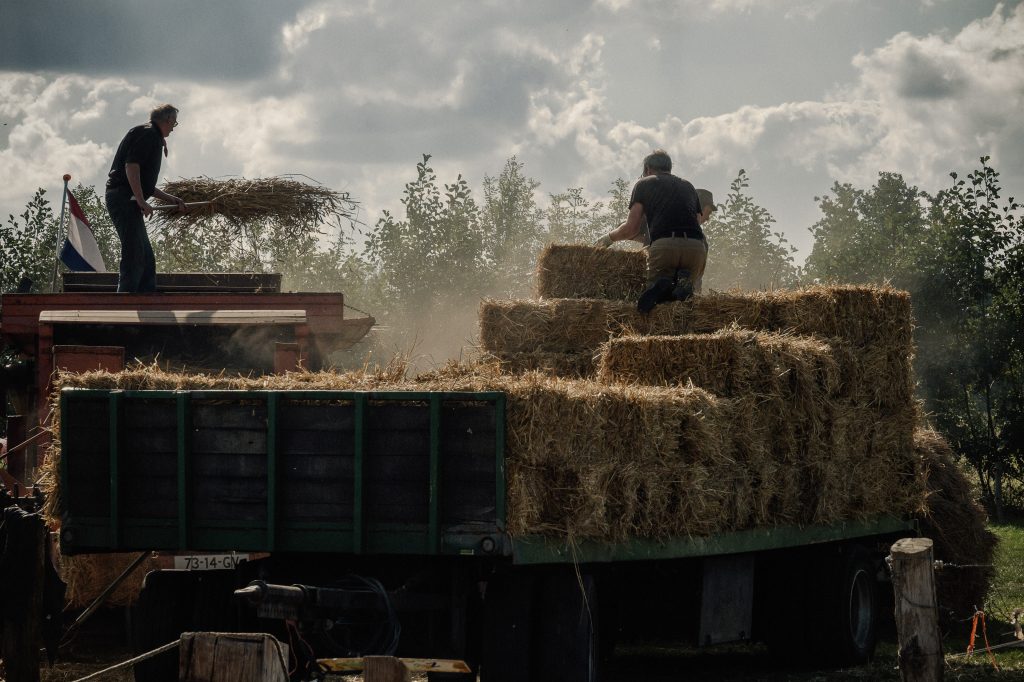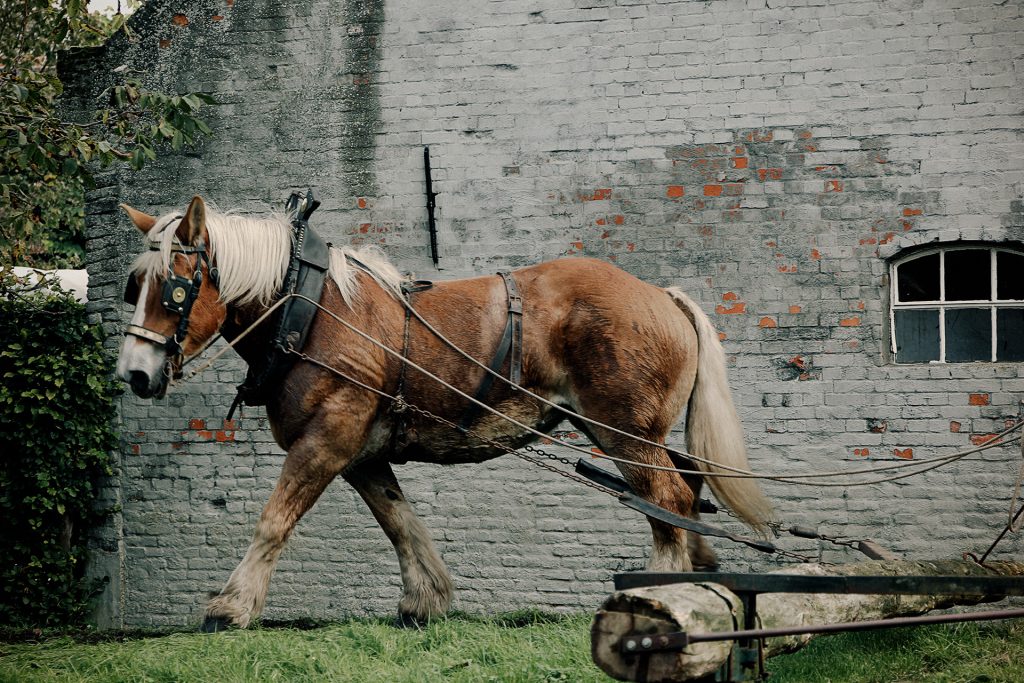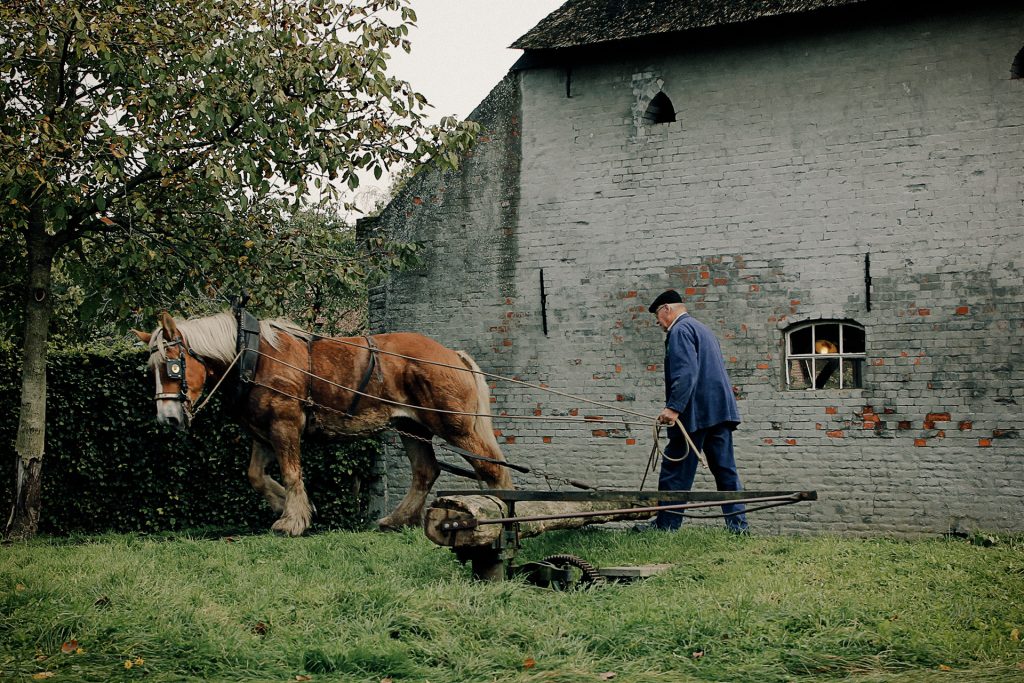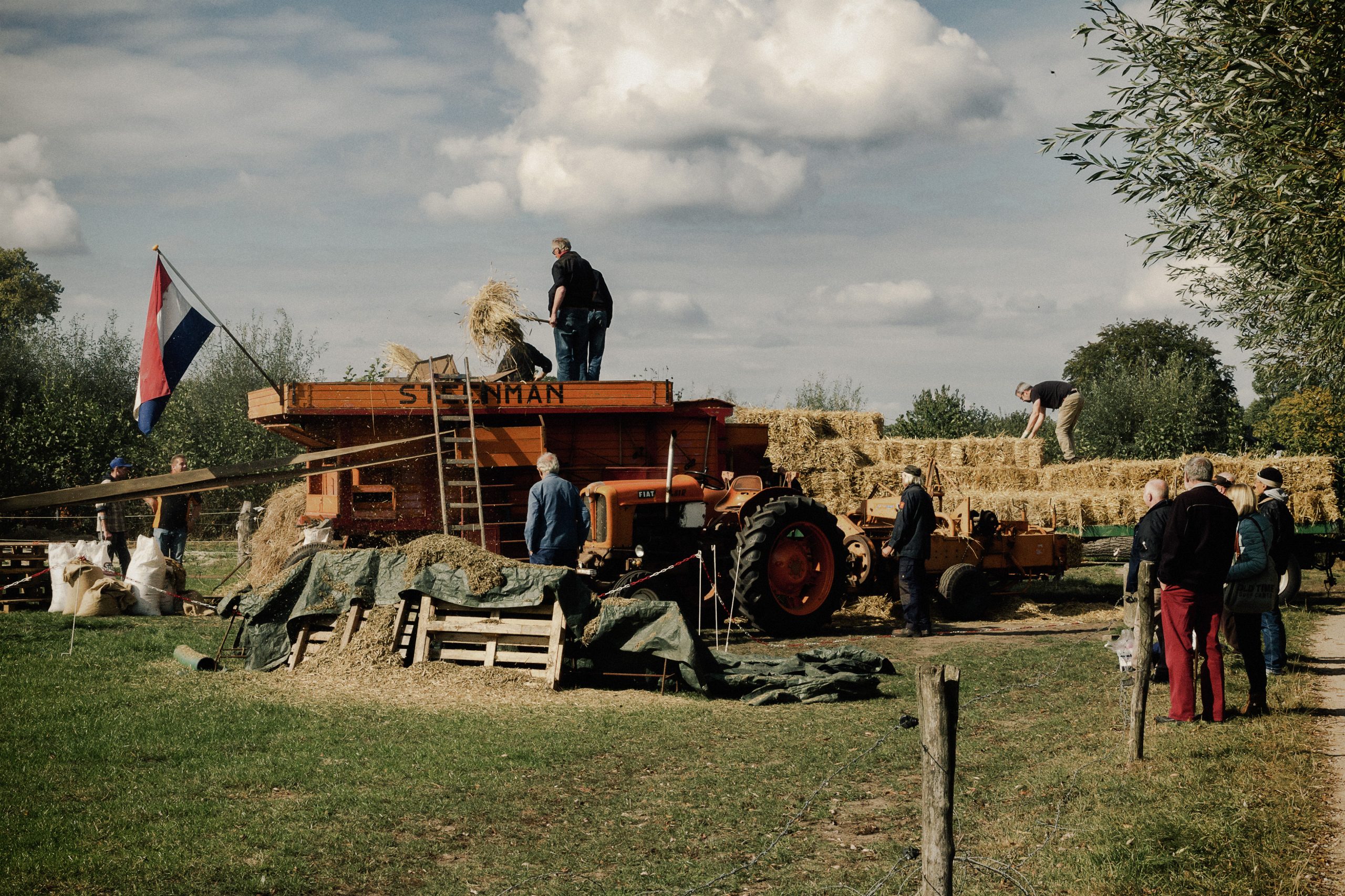
Separating the wheat from the chaff
Come to the threshing day at the Boerenbondsmuseum on 12 October and discover how grain was threshed before the advent of threshing machines. A lively demonstration of the hard work and conviviality of the past!
-
12 october
-
13:00u tot 17:00u
-
Regular entrance fees
-
Children are also allowed to thresh grain.
In August, the corn was removed from the field and laid out to dry on the mite. And on Sunday, October 12, this corn will be threshed in the field and on the threshing heap. The farmers had to work hard to earn an honest living. But to bake that sandwich, grain is needed, which used to be beaten out of the ears with a flail after the harvest. That’s threshing.
Threshing is the process of removing the grain from the ripe ear. Cozy, men among themselves, in a nice rhythm handling the flail alternately. During the threshing day in the Boerenbondsmuseum, volunteers regularly demonstrate manual threshing for the visitors.
It was not until the course of the 20th century that threshing machines were introduced.
How does grain threshing work?
Threshing is the process of removing the grain kernel from the ripe ear. However, not all types of grain can be threshed. It cannot be done if the kernel remains enclosed in the husk, as is the case with spelt. The kernel can only be freed by hulling (rubbing).
The very first tool for threshing was the threshing stick, which was used around 4200 BC. However, archaeological finds indicate that various forms of threshing existed much earlier than 4200 BC. Animals were also used by allowing them to walk over the grain to be threshed.
An improvement on the threshing stick was the threshing flail. Threshing was done by hand in the winter months using a threshing flail. The flail consists of a long handle, often made of wood, with a heavy, often curved part at the end called the “flail.” This heavy piece can be made of wood, metal, or even stone and is designed to deliver impact. The flail is held with both hands and swung forcefully against the bundles of grain. The impact of the flail breaks open the ears, causing the grain kernels to fall out of the husks. This process is repeated, with the flail being struck against the bundles until most kernels are released.
Next to the birthplace of Father van den Elsen is a threshing mound where grain is threshed using a horse.
The threshed grain was then cleaned with a winnowing basket and later with a winnowing mill. In barley and rice, the kernels are fused with the surrounding husks, which cannot be removed with a winnowing mill. These kernels must be hulled (scraped) after threshing with a hulling mill, although this process differs from that of spelt.
The first threshing machine was invented in 1784 by the Scotsman Andrew Meikle. With the advent of the threshing machine, threshing was no longer done by hand. His design significantly improved the efficiency of threshing, although there had been earlier experiments with mechanical methods. In the combine harvester, mowing, threshing, and cleaning occur in quick succession within the machine.

